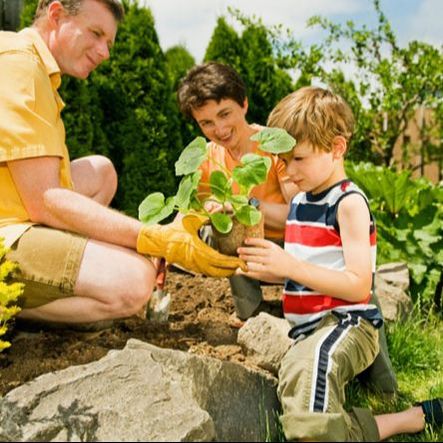|
Confession time:
As a kid, I hated my family garden. I was required to weed and water the backyard agricultural project my parents imposed upon me and my 8 siblings. What I didn't know was the impact that garden made upon my family's economics.
Tax-free Groceries If a parent was to pay a child just 8% (the avoided sales tax) of the value of the produce harvested in the family garden, the child would see the value of the work. The parents save 8% (or more) by not paying sales tax on those groceries, so by having kids plan the task with the parents, and follow through; the work gets done and the produce comes into the house for next to no cost.
|
Growing and preserving food is also a great way to insure you have a reliable source of essential food which is not subjected to market forces, food safety concerns, or worse.
The Old Farmers Almanac has a quick guide for the beginner vegetable gardener. Whether you’re a beginner or an old hand, planting in a pot or a plot, this advice will help you to plan and grow your tastiest vegetables ever.
|
Why garden? If you’ve never tasted garden-fresh vegetables (lots of people haven’t!), you will be amazed by the sweet, juicy flavors and vibrant textures. There’s absolutely nothing like them, especially if you grow the vegetables yourself—and you can! We’ll highlight the basics of vegetable garden planning: how to pick the right site, figure out how “big” to go, and how to select which vegetables to grow.
START WITH A SMALL VEGETABLE GARDEN Remember this: It’s better to be proud of a small garden than to be frustrated by a big one! One of the common errors for beginners is planting too much too soon and way more than anybody could eat or want. Unless you want to have zucchini taking up residence in your attic, plan carefully. Start small. WHERE AND HOW TO PLANT A VEGETABLE GARDEN
VEGETABLE GARDEN PLOT SIZE A good-size beginner vegetable garden is about 16x10 feet and features crops that are easy to grow. A plot this size, based on the vegetables suggested below, can feed a family of four for one summer, with a little extra for canning and freezing (or giving away). Make your garden 11 rows wide, with each row 10 feet long. The rows should run north and south to take full advantage of the sun. Vegetables that may yield more than one crop per season are beans, beets, carrots, cabbage, kohlrabi, lettuce, radishes, rutabagas, spinach, and turnips. \ SUGGESTED PLANTS FOR VEGETABLE GARDEN The vegetables suggested below are common, productive plants, but you’ll also want to contract your local cooperative extension to determine what plants grow best in your local area. Think about what you like to eat as well as what’s difficult to find in a grocery store or farmers’ market. (Each veggie links to a growing guide.)
WHEN TO PLANT A VEGETABLE GARDEN Know when to plant what. See our Best Planting Dates chart—a gardening calendar customized to your local frost dates—covering both sowing indoors as well as planting in the ground. TRY OUR GARDEN PLANNER It’s easy to plan your garden with our Almanac Garden Planner! We’ve done all the research for you! This planning tool helps you design your garden bed, automatically spacing the crops properly and integrating your local planting dates. Plus, you’ll see many free garden plans for inspiration! |
from Sooner Politics.org - Editorial http://www.soonerpolitics.org/editorial/family-garden-economics



No comments:
Post a Comment